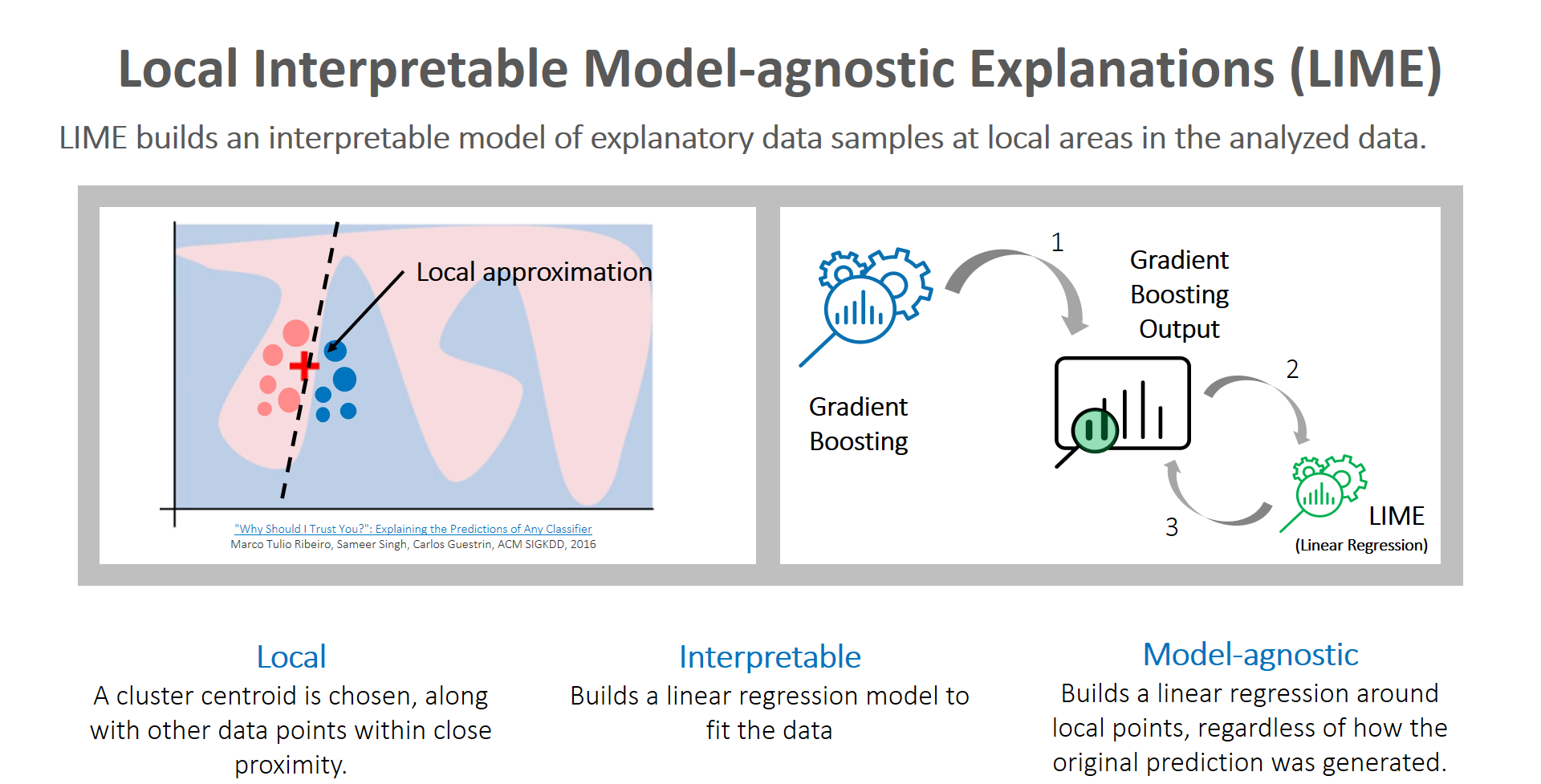
The acronym LIME,
which stands for Local Interpretable Model-Agnostic Explanations, is a specific
type of algorithm mode or technique that can help to address the black box
program in machine learning.
At
its most basic level, LIME will seek to interpret model results for human
decision-makers.
One
way to understand the use of LIME is to start with the black box problem, where
in machine learning, a model makes predictions that are opaque to the humans
using the machine learning technology. Visual models explaining the LIME
technique show a "pick step" process in ML where specific parts of
the data set are extracted to put under a technological microscope, to make
them explainable by interpreting them for human audiences.
The
"local" designation refers to a technique where the system chooses to
interpret local results instead of global ones, because this is more efficient
for the system.
The
output of many LIME tools is composed of some chosen explanations of model
activity in a given instance. This article uses the example of medical
diagnosis to show how LIME can introduce specific components for a locally
interpreted result, showing symptoms leading to a diagnosis.
In
explainable machine learning and artificial intelligence, humans are better
able to understand how the model is working, and ensure that it is working
accurately. Without these types of tools, the black box model can lead to poor
performance and outlier results that can be useless to practical utility.


0 Comments